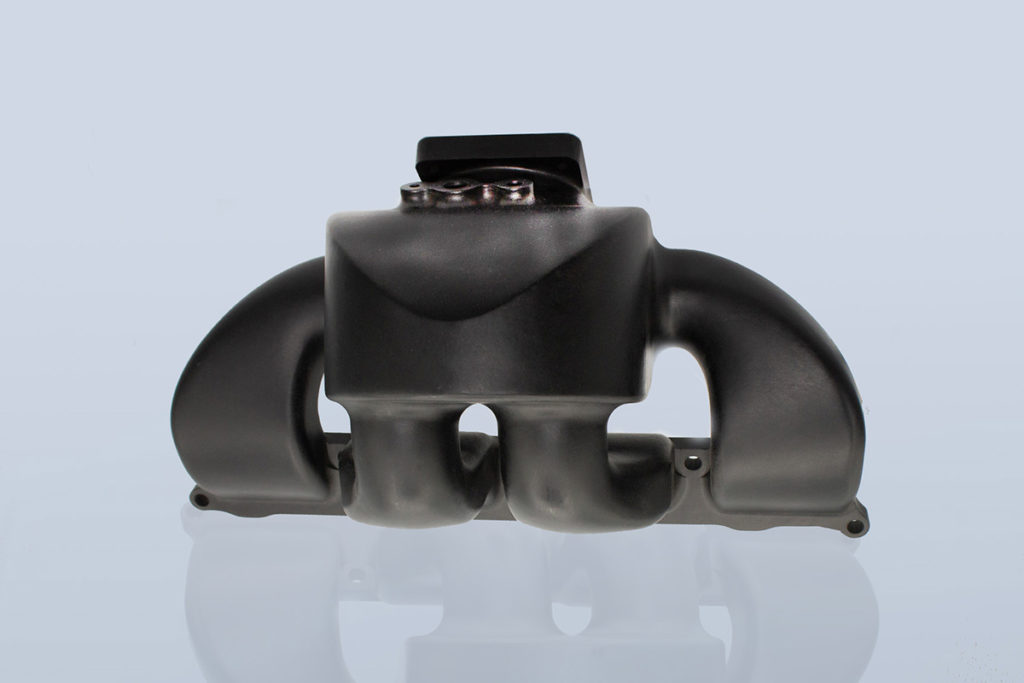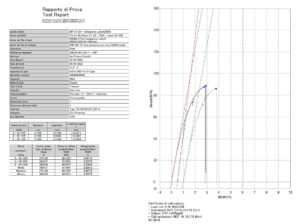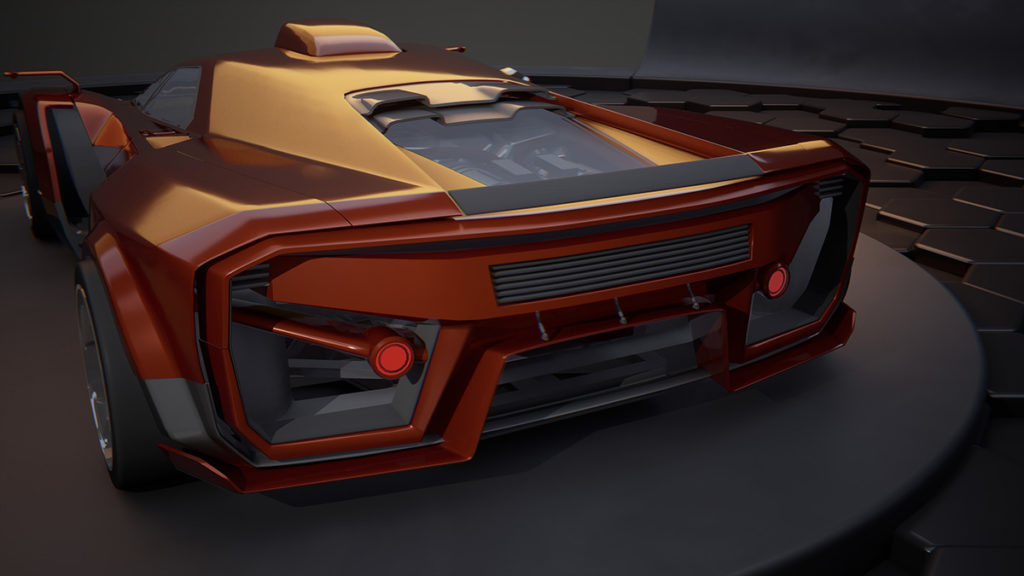
Used in the supply of engineering solutions for F1 – Windform materials are now widely employed for the additive manufacturing of functional components at the service of the most iconic supercars.
As technology progresses, the demands of a highly competitive Automotive market, requires continuous product innovation and performances above the standards.
As such Additive Manufacturing gains new chances above the traditional technologies like machining, injection molding and carbon laminating. This is mainly due to the flexibility of the processes as well as to the product improvements made possible by the quality of advanced composite materials enhancing lightness and mechanical properties of the parts.
Agile Manufacturing in Windform supports manufacturers competitiveness
The long time from design to tooling, production and roll-out has always affected the automotive market. Additive Manufacturing opens the door to a whole new flexible and customized production model able to dramatically reduce lead times, optimize performances as well as supply chain.
Validated Performances
Additive technology with reinforced composites requires an accurate validation and verification procedure due to the anisotropic characteristics of the materials. Many designers are quite concerned by the anisotropy of AM composites and sometimes they decide not to use them. CRP Technology can keep under control the level of anisotropy within the range stated in the technical data sheet thanks to its very rigorous product system.
In the field of composite materials, it is very important to maintain what declared in the TDS.
If a composite material is not produced with the appropriate quality requirements, the anisotropy could increase, while CRP Technology is able to keep it under control and guarantee it. How? With the dimensional test on the 3D printed product using both touch probe and laser scan performed by the newest and latest CMM (see picture 2a) and also with the tensile strength based on various directrixes.
It’s no more a secret that several brands developing Limited Edition Sport Cars are taking advantage of components 3D printed in Windform.
Such a rigorous approach together with materials’ world class mechanical performances have earned the company the award of important contracts.
We felt extremely lucky to be allowed to publish some technical details behind the secret of such successful cooperation, because the company is extremely reluctant to disclose details of Automotive supply covered by NDA agreements.
At the core of the various cooperation relies the very special CRP group expertise which has been evolving from supplying Motorsport’s team solutions to creating dedicated additive materials in house – and re-engineering solutions for the most demanding sectors. This is where the company invested more than 3 decades of R&D.
Their current offering aims at improving not only operational efficiency but also the terms of manufacturing, validating and supply which goes from 3 to 10 days even for the most complex geometry. Recently the wide range of validated materials and premium level of service accomplished the award of end-use parts empowering the performance of most iconic supercars internationally.
“The world of F1 is different from that of super cars but the focus for manufacturers is pretty much the same: combining power(/strength) to extreme performances and certified reliability”. comments the CEO Franco Cevolini.
From aerodynamic parts to fluid retention systems and engine’s parts
While we are not allowed to list the name of the brands we’ll cover the main components, and benefits that are involved in the supply.
In most cases it’s about functional components which benefit from weight and volume optimization while performing strength and resistance to extremely stressful conditions such as operating temperature, shocks, vibrations, immersion in fluids.
Specifically the parts manufactured in Windform include:
- aerodynamic parts subject to aero load and temperature excursions;
- critical underbody components responsible of car’s handling at high speed;
- customized fluid retention systems operational submerged in oil at high temperature
- smart wiring harnesses systems withstanding temperature, shocks, breakage, and vibrations
Resistance to fluid immersion and high temperatures
When it comes to retaining and redirecting cabling inside new car’s the task is extremely arduous considering the placement sizing and power quality of electronics, controls and high power energy cables to be deployed safely in narrow spaces.
Retaining solutions created in Windform support complex miniature geometries extremely customized to the available spaces and withstanding the most adverse conditions while providing for the whole system inspection. Thanks to Additive Manufacturing technology such systems are manufactured in one piece eliminating assembly and disassembly, adapt to the most difficult space constraints and provide for the best use of hollows and ducts without affecting the manufacturing budget with expensive dedicated injection molds.
The duct system of the gearbox in the picture below represents a good example of resistance to high vibrations and temperature, to fluid entrance as well as to liquid submersion;
The system is fully operational at 212 °F temperature with peak at 248 °F and it’s derived from a unit designed to last any Endurance races including 24 hours of Le Mans.
The resistance of the material is equally trialed when it has to offer resistance to extremely high temperatures as it happens for power cables @ 800V.
This is where Windform offered no deformation, damages or issues after months of continuous operation at high speed and peaks at 211.27 mph.
The power and beauty of Aerodynamic components in Windform
The reliability of aerodynamic components is particularly critical to the proper functioning of the adjustable wing and winglets. The purpose of these appendixes – both external as well as not visible, positioned at the bottom of the vehicle – is to increase the downforce at high speed not to lose grip, even causing a greater drag.
The same magic of hand craftsmanship appears in such cutting-edge engineering components realized in carbon-fiber reinforced materials giving form to exclusive designs conceived to make the most of material’s properties such as stiffness, weight, volume reduction and smooth aesthetic result.
This is made possible by the strength of the materials being able to resist high mechanical stresses, particularly from the interaction of air with the aerodynamic component. Windform range also encompasses material in charge of balancing rigidity with the absorption properties needed to protect underbody components from eventual shocks derived from the roughness of streets.
Engine’s related parts
Thanks to the drastic reduction of costs related to the by-passing of mold production, engine components with critical complex geometries are also manufactured in Carbon-fiber reinforced composites. Inlet manifolds, brake and engine cooling systems, scoops are produced for limited editions super cars needing specific customization and performances.

Inlet manifold 3D printed in Windform. Image courtesy of CRP USA.
The key factor in the selection of a premium SLS material is the highest mechanical properties being able to withstand the aero load, the vibrations and having high UTS and fatigue resistance. This is where the Windform range made the difference over others materials, and was the perfect technical choice for these demanding parts.
Subscribe to Our Email Newsletter
Stay up-to-date on all the latest news from the 3D printing industry and receive information and offers from third party vendors.
You May Also Like
Gorilla Sports GE’s First 3D Printed Titanium Cast
How do you help a gorilla with a broken arm? Sounds like the start of a bad joke a zookeeper might tell, but it’s an actual dilemma recently faced by...
Nylon 3D Printed Parts Made More Functional with Coatings & Colors
Parts 3D printed from polyamide (PA, Nylon) 12 using powder bed fusion (PBF) are a mainstay in the additive manufacturing (AM) industry. While post-finishing processes have improved the porosity of...
$25M to Back Sintavia’s Largest Expansion of Metal 3D Printing Capacity Since 2019
Sintavia, the digital manufacturing company specializing in mission-critical parts for strategic sectors, announced a $25 million investment to increase its production capacity, the largest expansion to its operations since 2019....
Velo3D Initiates Public Offering in a Bid to Strengthen Financial Foundations and Drive Future Growth
Velo3D (NYSE: VLD) has been among a number of publicly traded 3D printing firms that have attempted to weather the current macroeconomic climate. After posting a challenging financial report for 2023,...



































